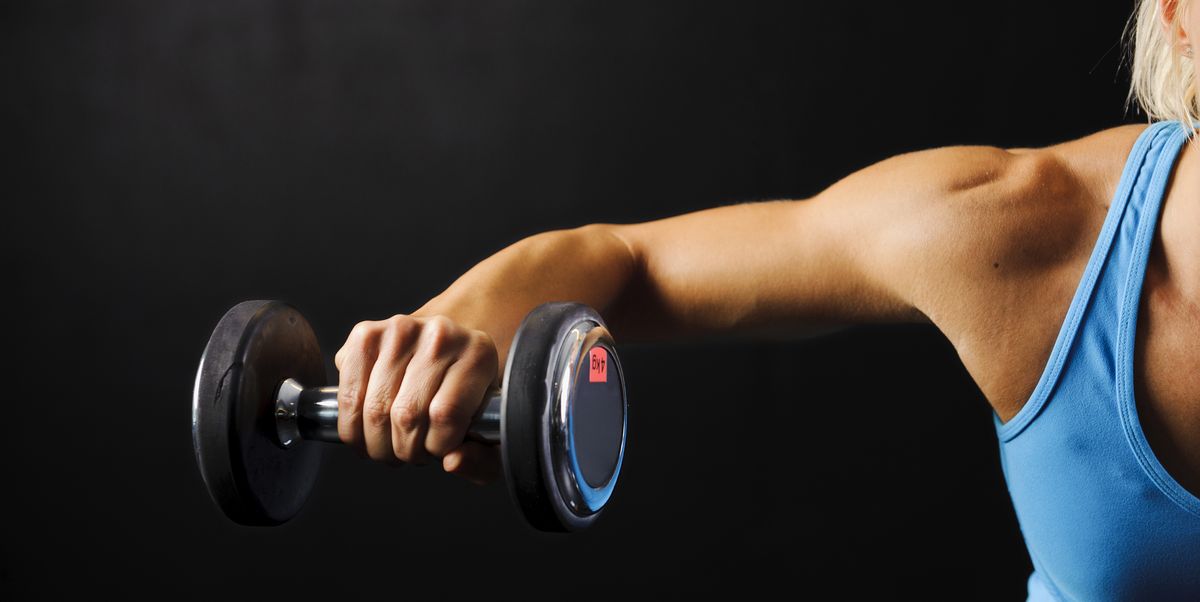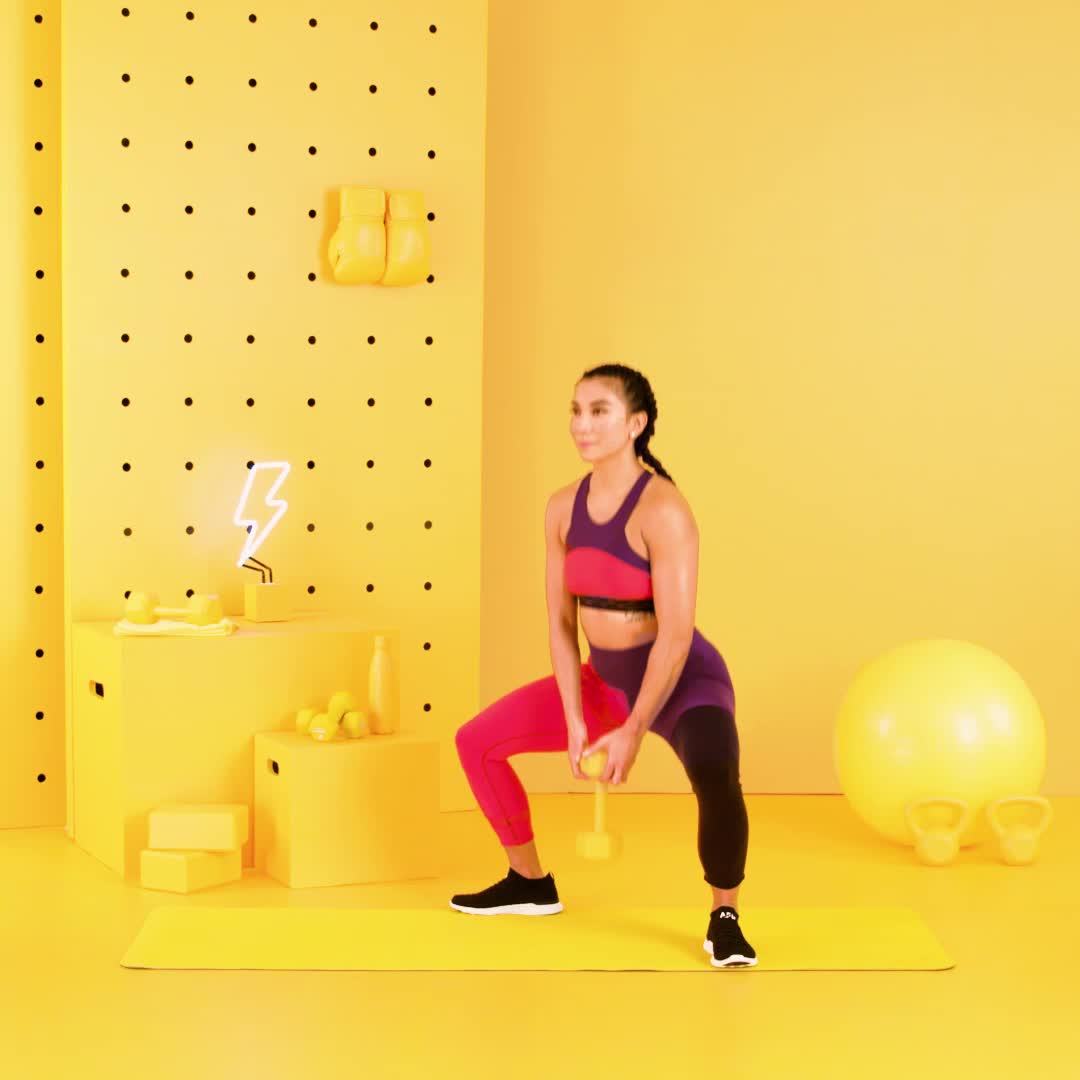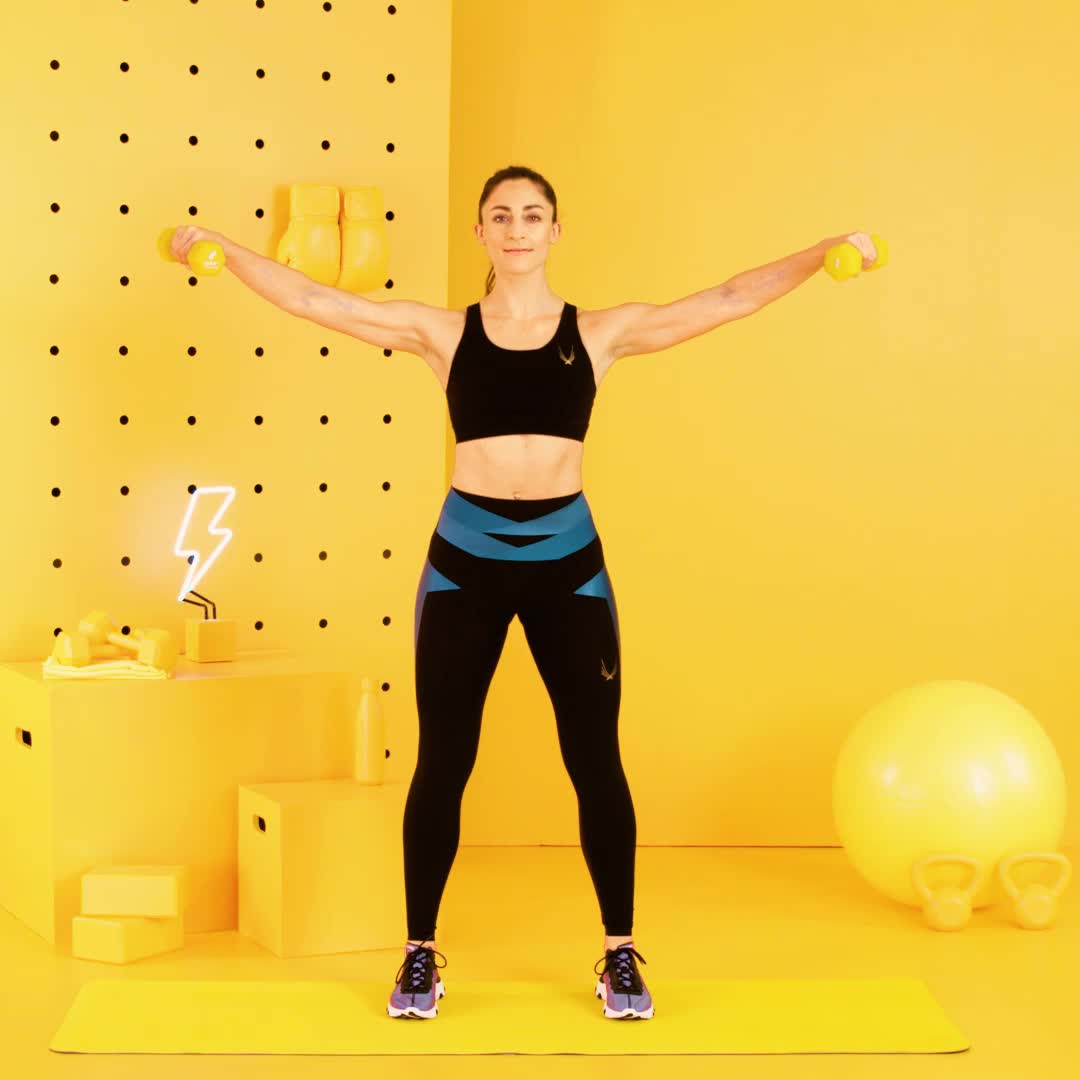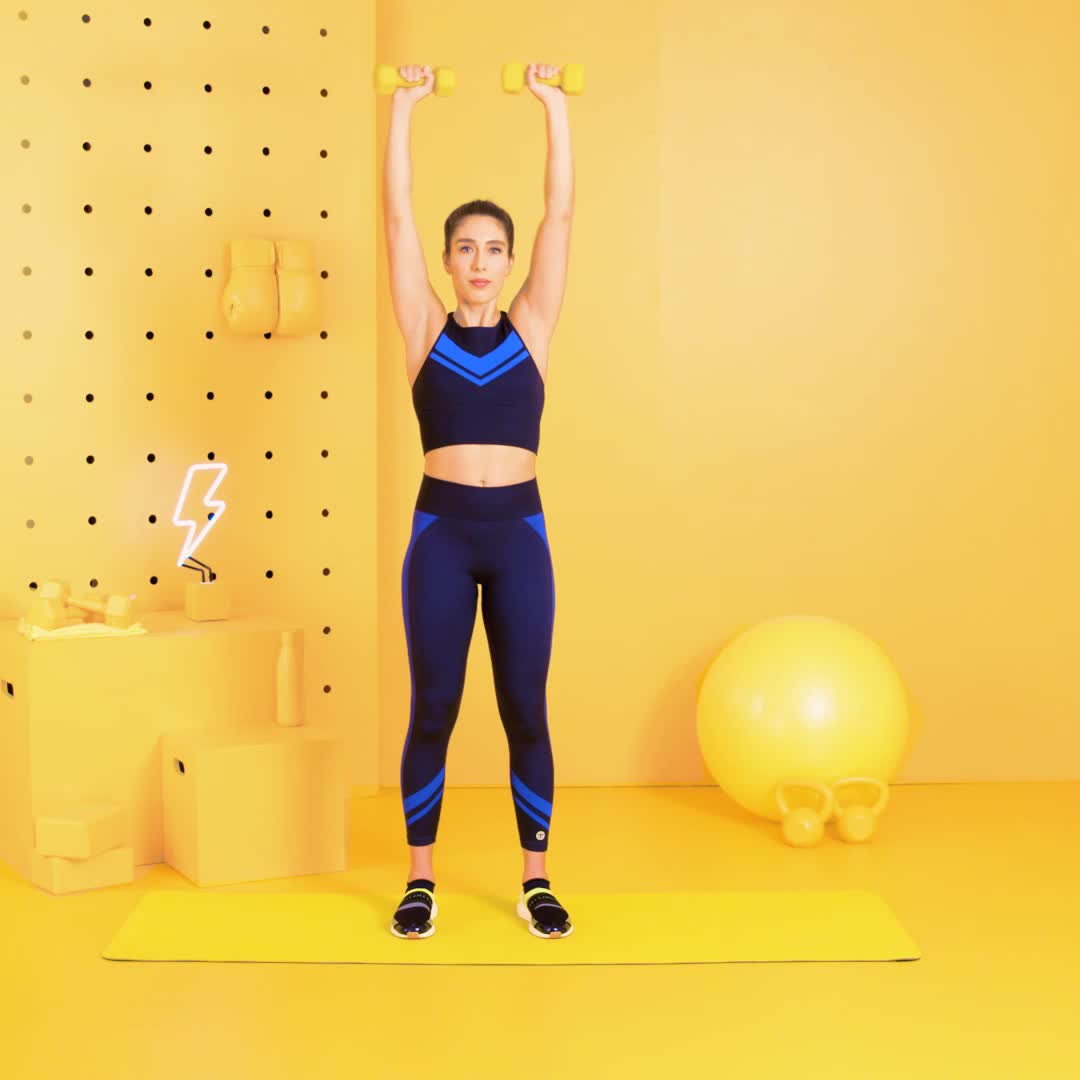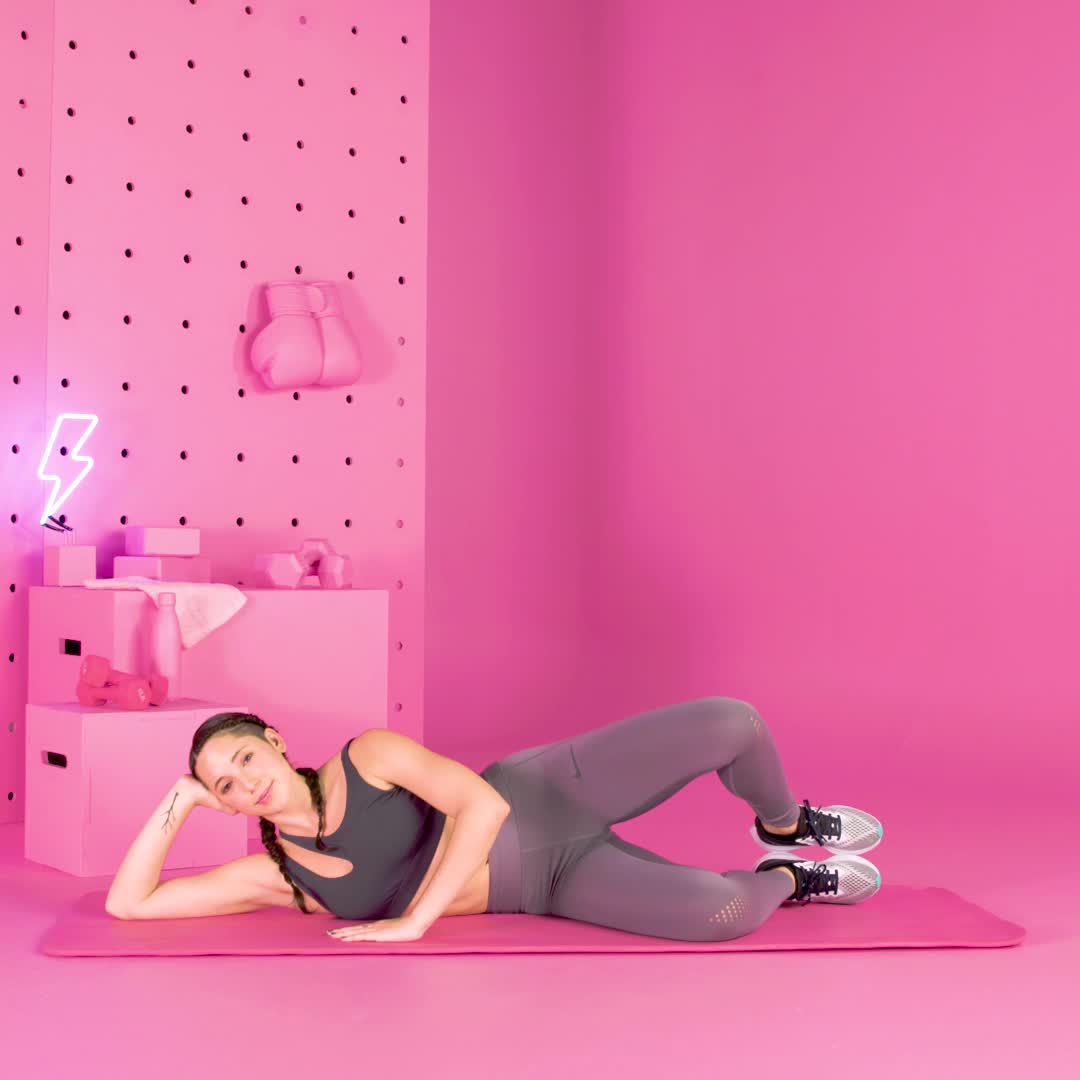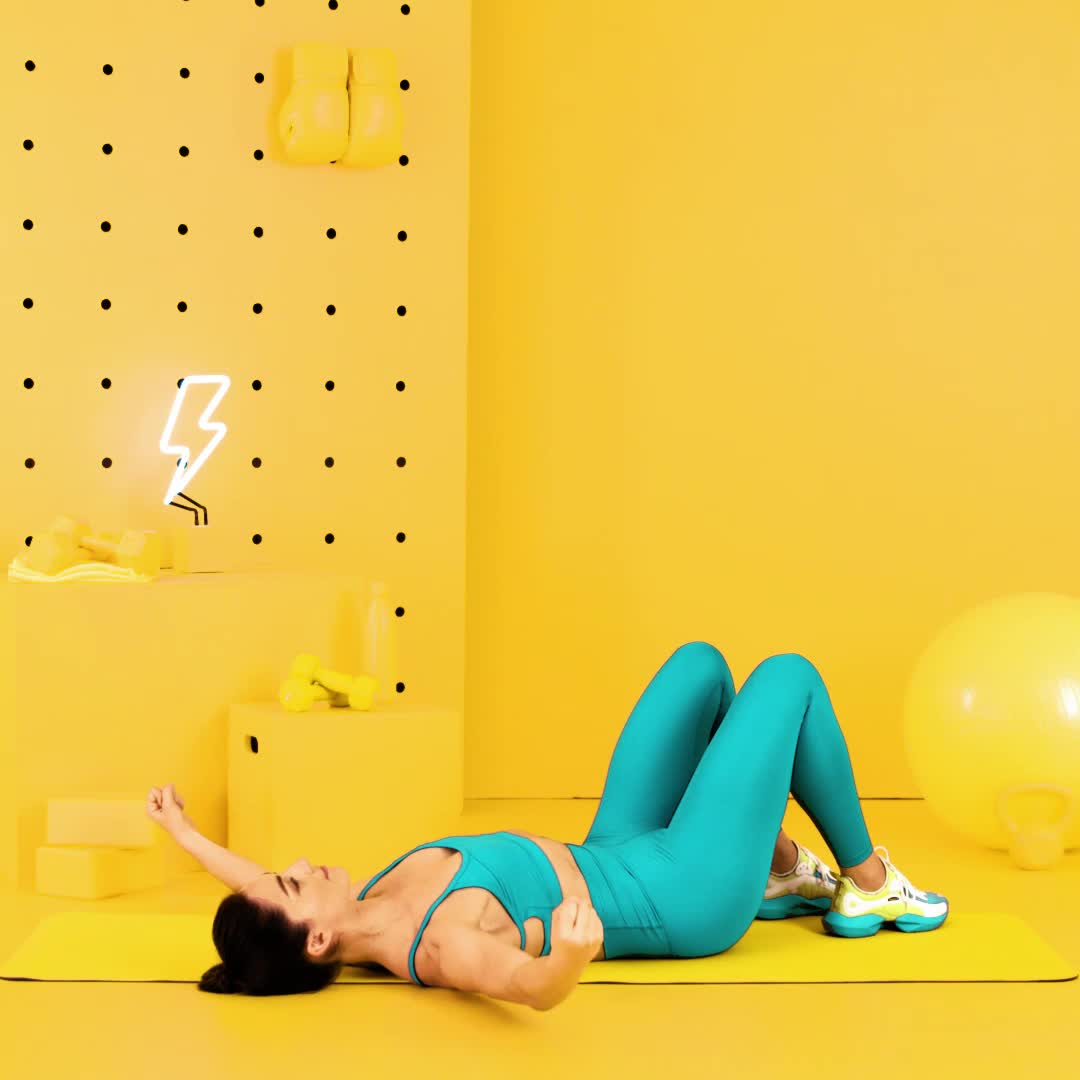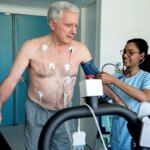Ever heard the words abduction and adduction in relation to your workouts? These two similar-sounding terms describe opposite movements that are key to improving strength, mobility, and injury prevention. Distinguishing abduction versus adduction exercises can help you train smarter—especially when it comes to hip and shoulder strength and function, and overall stability.
“It’s really easy to confuse the two, but knowing the difference between adduction and abduction exercises can help you train better,” says CJ Hammond, CPT, a trainer and gym owner. “They both use muscles that help in other, more complex movements—and by knowing how to work the two, you can make your strength and alignment more powerful.”
Meet the experts: CJ Hammond, CPT, is a RSP Nutrition trainer and owner of sports performance gym Gym Legend. Noah Neiman, CPT, is head trainer and co-founder of Rumble Boxing. Ashley Joi, CPT, is a Los-Angeles based trainer and featured on the Centr app.
Abduction Vs Adduction: What’s The Difference?
Ready to finally get these two terms straight? “The words adduction and abduction refer to the movement of body parts either toward or away from the midline of your body (or your torso),” says Noah Neiman, CPT, co-founder of Rumble. “For example, sticking your leg out is an abduction muscular movement (pulling away), while the act of drawing that same leg back toward the body would be an adduction movement.”
The difference between abduction and adduction comes down to direction:
- Abduction is movement away from your body’s midline.
- Adduction is movement toward that midline.
Think of your midline as an invisible line running from the top of your head down between your feet, says Hammond. When you raise your arms or legs out to the side—like during the first part of a jumping jack—you’re performing abduction. When you bring them back in, that’s adduction.
“The abductors, located on the outer hips and shoulders, are key for stability and proper alignment,” says Hammond. They’re active in moves like lateral leg raises and shoulder raises. One abduction-based exercise you probably already into your strength workouts: lateral shoulder raises (see below!), says Ashley Joi, CPT, health and fitness coach. This move engages the deltoids—your arm abductors—as you lift your arms out to the sides.
On the flip side, adductors—mainly your inner thighs—help bring your limbs back toward the midline. Think: finishing a jumping jack or pressing your thighs together during a sumo squat.
Both muscle groups play an essential role in balance, joint alignment, and overall strength.
|
Movement |
Abduction |
Adduction |
|
Definition |
Movement away from the body’s midline |
Movement toward the body’s midline |
|
Common Examples |
Jumping jack (outward motion), lateral leg raise, lateral arm raise |
Jumping jack (inward motion), sumo squat, chest fly |
|
Primary Muscles |
Gluteus medius/minimus, deltoids |
Adductors (inner thigh), pecs, lats |
|
Function |
Stabilizes hips and shoulders, improves balance |
Supports alignment, improves posture, enhances control |
Ready for a quick, simple trick that’ll finally make the distinction between abduction vs. adduction stick?
“Adduction” has the word “add” in it, Hammond says. When you add, you’re bringing things together—and when you do a movement that involves adduction, you’re bringing one or more of your limbs “together” toward your midline. Boom!
3 Best Abduction Exercises
1. Shoulder (Lateral) Raise
How to:
- Stand with feet hips-width, holding a dumbbell in each hand, arms at sides and palms facing in.
- Roll shoulders back, engage core, and look straight ahead as your arms raise a couple inches out to each side, and pause.
- Lift dumbbells up and out to each side with arms almost completely straight, stopping when elbows reach shoulder height and body forms a “T” shape. Breathe in as you lift.
- Pause and hold for a second at the top of the movement.
- Exhale as you lower the weights slowly (take about twice as long as you took to lift them), bringing arms back to sides. That’s 1 rep. Neiman recommends three sets of 8 to 12 reps.
2. Overhead Dumbbell Press
How to:
- Stand with a dumbbell in each hand, at shoulders, with an overhand grip. Thumbs on the inside and knuckles face-up.
- Exhale as you raise the weights up overhead in a controlled motion.
- Pause briefly at top of motion.
- Inhale and lower dumbbells to shoulders. That’s 1 rep. Neiman recommends three sets of 15 to 20 reps.
Pro tip: Neiman recommends adding both types of movements to your workouts at least three times a week.
3. Clam Shells
How to:
- Lay down on one side with head in hand. Bend knees and place inner arches of feet together.
- Lift feet while keeping knees grounded on floor. Open top knee like a book. That’s 1 rep.
- Repeat on other side. Neiman recommends 20 reps on each side.
3 Best Adduction Exercises
1. Chest Fly
How to:
- Stand with feet shoulder-width, holding a dumbbell in each hand.
- Raise arms up straight out in front at chest level with palms facing each other.
- Extend arms out to sides, until they are fully extended. Keep arms at chest level entire time.
- Bring arms back to center. That’s 1 rep. Neiman recommends three sets of 10 to 15 reps.
2. Pull-Up
How to:
- Start with hands gripping pull-up bar approximately shoulder-width, palms facing forward. With arms extended overhead, engage core and legs. That is starting position.
- Pull yourself up toward the bar using your back until bar is at chest level, while exhaling.
- On your next inhale, slowly lower yourself to the starting position. That’s 1 rep. Neiman recommends three sets of as many as you can do with a 1 minute rest in between.
Pro tip: Use a resistance band under your feet to assist you.
3. Lateral Lunge
How to:
- Stand with feet hip-width, hands at sides.
- Take a big step to the right, then push hips back, bending right knee and lowering until right knee is bent to 90 degrees. Keep left leg straight.
- Push off the right heel to an upright standing position. That’s 1 rep.
- Repeat on the other side. Neiman recommends three sets of 10 to 15 reps.
Benefits Of Abduction Vs. Adduction Moves
By now, you’ve realized it’s not just a fun vocab lesson, and abduction and adduction moves are important for your overall fitness and in daily life. Here are a few of the perks that come with them:
- Better range of motion. Investing in both equally is what helps with mobility, according to Neiman. The key is working through abduction and adduction moves together. Neiman recommends doing both for the same amount of time. “Simply put: The more varieties in which you train your body, the more mobile you’ll be. This is especially important when talking about hip mobility, which is the epicenter of our bodies.”
- Training variety. When you work in abduction and adduction exercises, you’re naturally adding contrast to your routine. “In order to have a strong and healthy body, it’s important to train all movement patterns,” Neiman says.
- More functional strength. Benefits of both abduction and adduction exercises include increased strength. They also help with body awareness and boost balance as you slowly (yet steadily!) adjust to the moves. All that adds up to noticeable gains especially lifting heavier weights.
- Healthy joints. “Training adduction and abduction exercises for the hip compound is integral for healthy flexion of the hip, and can even contribute to healthy lower back, knee, and neck movement,” says Neiman.
Nikhita Mahtani is an NYC-based freelance writer with six years of experience specializing in design and wellness. She primarily writes home tours, service pieces, SEO stories, and features, offering readers practical tips to personalize current trends. Nikhita holds a master’s degree in magazine journalism from New York University, and her work has appeared in publications such as Veranda, SELF, Allure, ELLE Decor, Domino, and Dwell.
Read the full article here


